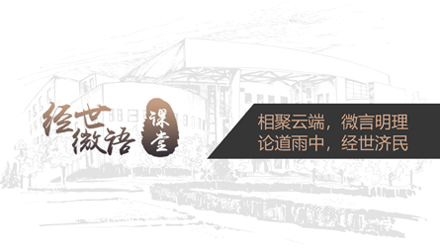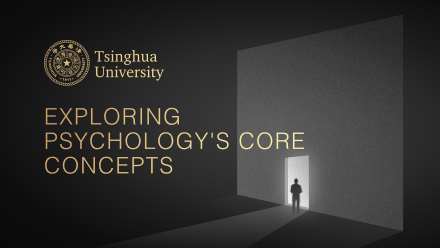
当前课程知识点:History of Chinese Architecture Part I > 3 Architecture in the Wei, Jin and the Northern and Southern Dynasties‘ Period > Section 2 > Grottos in the Southern and Northern Dynasties’ period
返回《History of Chinese Architecture Part I》慕课在线视频课程列表
返回《History of Chinese Architecture Part I》慕课在线视频列表
我们今天保留下来这个时代
最为丰富的一个类型就是石窟寺
除了塔,我们讲到北齐的(祖师塔)
嵩岳寺塔,包括作为遗址的永宁寺
但类型最丰富的实际上是石窟寺
如果我们看一下石窟寺的分布
实际上可以看到一个佛教传播的大致过程
它也是沿着丝绸之路,河西走廊这么进来
在新疆有大量的石窟,然后到甘肃有石窟
然后延伸过来,到了甘肃后来进到陕西
然后到了河南,延伸过去
同时在陕西它就有另外一条路
就开始进到四川地区
包括四川后来的安岳石窟也好
大足(石窟)也好,等等,就是那一条线
四川也是一个石窟集中的区域
这边可以说一直影响到了我们东端
整个石窟都是这么发展的
保留下了还是相当大数量的这个时代的石窟
从石窟的形制来看
也分这么几个时期
北魏的初期的石窟
我们看到的石窟大量的是凿开
凿一个佛像然后来拜
这是一种形式
后来它就慢慢接近于中间有一个塔形柱
围绕着一圈“
“绕塔礼拜”的形式
就在石窟当中有所反应
它还有修禅的禅窟
和尚在里头静坐、修行的地方
还有进行礼拜的地方
这些洞就开始结合在一起(
(形制)就开始丰富
到了再后来,我们看到的石窟的形式
就更多地模仿了建筑大殿的空间
变成了这么一种形态
我们可以看到一些早期的石窟
在河西石窟当中呢,我们就看到
特别有意思,中间有一个通道(或者)一个大厅
两边有禅窟进去
这种修行的方式
在敦煌莫高窟就有这样的形式
我们可以看到敦煌莫高窟的情况
这张照片就是我们刚才讲的
中间一个大通道,或者一个大厅
然后两边开的小窟
小窟实际上是僧人坐禅的、修行的地方
慢慢有些窟就开始模仿建筑的形态
比如说屋顶,做出很丰富的藻井
上头布满了壁画
好像一个建筑室内的感觉,这种东西就出来了
它沿着中间的窟壁
还是凿很多小窟
这个大窟可能是一个礼拜活动的空间
然后在边上又分出很多小窟
小窟又是修禅的空间
变成这样的一种格局
这个和印度的或者早期的洞窟
还是有某些类似的地方
有一些很接近的地方
再到后来
就开始转化成中心塔柱——
中间是一个塔的样子——
就开始出现这样的形制
我们在敦煌的石窟当中可以看到各种各样的形制
其中有很多是对当时建筑形态的一个模仿
包括屋顶的做法
包括在墙上装出木斗栱来
我们从墙上的彩绘
也可以大概看到
那个时代建筑的装饰是怎么做的
在敦煌壁画当中
我们还看到兴造寺院的图形
我们知道当时的人是怎么样来盖这些庙的
通过这样的图形可以看到
还有修建塔的形象
各种各样不同塔的形象
在敦煌壁画里
有极其丰富的建筑图像
曾经有些学者
专门对敦煌壁画里的建筑形象
进行过研究和分析
这个时期很重要的还有一个石窟
就是天水的麦积山石窟
这个石窟很特别
有人说,它的整个格局
就像一个“坛城”的格局——
中间是这样一个山体
周边环绕这一大片环境——
这么一个形制
那么在麦积山石窟当中呢
我们可以看到更多的建筑的形象
特别是外檐的形象
因为在敦煌石窟也好
敦煌石窟的外表面破坏的比较严重
因为它是在一个沙漠地区
沙的侵蚀很大
外表面大部分都已经没有了
我们今天看到的实际上是一个
经过六十年代初加固过的一个表面
表面已经处理了
就是按照我们现在的
加固技术处理了
原来早先剩下来的东西已经很少很少
除了一些比较早(晚)期的
宋代的窟檐剩下
大部分外头的部分已经破坏的比较厉害了
但是在麦积山石窟
包括河北的响堂山石窟
我们仍然可以在山体上看到
他们在山崖上雕凿出来的建筑的形象
那么从麦积山石窟这张图片当中
我们可以看得很清楚大殿形象
一,二,三,四,五,六……七间
它的屋顶就很像佛光寺的屋顶
我们在这儿可以看得到
它的格局也是这样
它的前头有个前廊
好像是一个礼拜的空间
后头进去就是龛,里头供着佛像
应当说麦积山石窟
已经很建筑化了
很像(木结构)建筑的一个空间的形态
我们可以看到很多
从一些细部来看
你会发现它有很多的细部的雕饰
还是反映了佛教作为一种外来文化
它的特征,还是可以看得到的
当然
讲南北朝时期的石窟
我们就不能不讲到云冈石窟
云冈石窟是南北朝时期
非常有代表性的石窟
因为它的岩石的质量相对比较好
所以保存的那些早期的造像也还不错
像敦煌,我们今天保存下来
主要是唐代的东西会比较多
早期保存下来可能很少
云冈石窟早期的窟的开凿方式
我们叫做一种“大像窟”——
中间都是一个大的石造像
然后可能有弟子啊,有菩萨啊,有力士啊
环绕着它——就这么一个像
所有开凿的窟(里的内容)
就是为了表现这个像——
它的早期的大窟
基本上都是这样
十六窟到二十窟这五个窟
基本上都是这样一个形制
其中包括最大的那尊佛像
我们图片上有,大家可以看
到了后来,稍晚一些的时候
比如说第九窟第十窟
虽然还是大像窟
但是从我们现在保留下来的情况来说
我们可以看到它的门廊,它的柱子
就有更多的建筑的表现
在后边的一些作品当中
在更晚一些的作品当中
满墙满壁都开始保留下来的那些浮雕
保留的很清楚
我们从中就可以看到塔的形象
殿的形象,城门的形象
在云冈石窟当中都可以看得到
包括塔形柱的情况
所以后面我们还会提到
从这些石窟当中
我们看当时的建筑的情况
另外就是龙门石窟
龙门石窟实际上
是北魏从平城
迁都洛阳以后新建的
早期的北魏时期的石窟
保存的也比较好
虽然最主要的那一组
是武则天时期
就是唐代时期的东西了
但是它仍旧保留了
许多早期的
北魏时期的石窟
我们不展开
另外一个很重要的石窟
就是刚才我们提到
河北邯郸,南北响堂山石窟
它是北齐时期开凿的
大概是公元六世纪的时候的东西
在这座石窟当中——这座石窟破坏得比较厉害
很多的造像被破坏——
但是它的建筑的表现仍然很充分
特别是对于塔这种形制的表现
非常充分
我们可以看到一些图像
另外山西太原,还有天龙山石窟
它基本是东魏
北齐这个时期开始开凿的
也还保留了一些早期的洞窟
那么特别是从这些早期洞窟当中
它完全是按照建筑形象雕出来的立面
比如说柱子,斗栱
我们可以看到这些照片
大家可以看一下
对于那个时代的斗栱也好
柱子的形态也好
其实我们很多的信息是从石窟当中得到的
-1 An outline of Chinese Architecture
--Characteristics of Chinese Architecture
--The historical division of Chinese Architecture
--A discussion of the typologies in Chinese Architecture
-2 An outline of Ideas about ancient architecture
--Ancient city planning thoughts and two opposing arguments
--Principles of ancient architecture
--Ideas about ancient architecture
--Ideas about ancient architecture
-Homework
-Section 1
--Early civilization and architectural morphology
--Architecture in the Xia and Shang dynasty
--Architecture in the Xia and Shang dynasty
--Architecture in the Zhou dynasty
-Section 2
--Civilization and cities of the Qin and Han dynasty
--Palaces of the Qin and Han dynasty
--Residential architecture, tombs and other types of architecture
-Homework
-Section 1
--Cities and palaces of the Three Kingdoms, the Jin dynasty and the Southern and Northern Dynasties’ p
--Cities and palaces of the Three Kingdoms, the Jin dynasty and the Southern and Northern Dynasties’ p
--Cities and palaces of the Three Kingdoms, the Jin dynasty and the Southern and Northern Dynasties’ p
--Development of Buddhism and the prosperity of Buddhist architecture
--Buddhist architectural remains in the Southern and Northern Dynasties’ period
-Section 2
--Grottos in the Southern and Northern Dynasties’ period
--Development of wood structures as seen from grottos in the Southern and Northern Dynasties’ period
--Gardens from the Qin and Han dynasty to the Southern and Northern Dynasties’ period
-Homework
-Section 1
--Chinese culture of the Sui and Tang dynasty
--Two capitals of the Sui and Tang dynasty: Chang’an and Luoyang
--Two capitals of the Sui and Tang dynasty: Chang’an and Luoyang
-Section 2
--Li-fang and residential architecture in Chang’an and Luoyang
--Important buildings in the Sui and Tang dynasty palaces
--Gardens of the Sui and Tang dynasty
-Homework
-Section 1
--Religious architecture in the Sui and Tang dynasty
--Wood Buddhist Halls in the Sui and Tang dynasty
--Brick and masonry towers in the Sui and Tang dynasty
-Section 2
--Architectural style and design method in the Sui and Tang dynasty
--Wood frame technology in the Sui and Tang dynasty
--Brick and masonry technology in the Sui and Tang dynasty
--Progression of architectural technology and development of art
-Honework
-Section 1
--History of the Five Dynasties’ period and the Song, Liao and Jin dynasty
--Bianliang of Northern Song and Lin’an of Southern Song
--Pingjiang Prefectural City, Southern Capital of Liao and Central Capital of Jin
-Section 2
--Palaces in Bianliang of Northern Song and Lin'an of Southern Song
--Palaces in the Central Capital in the Jin dynasty
--Gardens of the Song, Liao and Jin dynasty1
--Gardens of the Song, Liao and Jin dynasty 2
-Homework
-Section 1
-Section 2
--Double-eave single-storey wood hall
--Multi-story wood structure s in the Song, Liao and Jin dynasty
-Homework
-Section 1
--Brick and masonry pagodas in the Song, Liao and Jin dynasty
--Brick and masonry pagodas in the Song, Liao and Jin dynasty
--Brick and masonry pagodas in the Liao and Jin dynasty
--Brick and masonry pagodas in the Song dynasty
--Brick and masonry pagodas in the Song dynasty
-Section 2
--A summary of the Yingzao-Fashi
--video
--video
--video
--video
--video
-Homework





